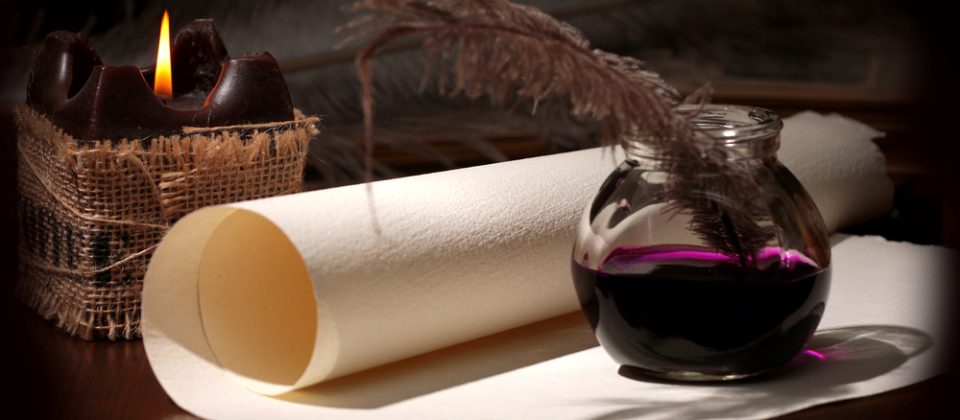Tags
By Sara Karnish
As writers, we have an overwhelming number of decisions to make every time we sit down and put words on the page. Plot, character, conflict, resolution—these elements and more work together to form a manuscript that we hope will—well, work.
One big decision a writer faces is what kind of manuscript to write. The sheer number of genres and forms out there are daunting, so to narrow the scope a bit, this post focuses on fiction. Specifically, examining three of the key types of fiction—the short story, the novella, and the novel.
I love reading fiction but still have so much to learn about writing fiction. The differences among the three types, however, is something that has puzzled me throughout my literary life. Since I can’t even pretend to be an expert on the three types, I spoke with author and longtime friend of GLVWG, Phil Giunta, and asked him to explain the differences among the three.
SK: Thanks for speaking with me, Phil! Can you help me clear up the confusion—what’s the difference between a short story, a novella, and a novel?
PG: Going strictly by the numbers—and these are approximate–a short story ranges from 2,000 to 10,000 words, novellas fall between 10,000 and 40,000 words, and while anything above that could be considered a novel, 50,000 words is typically the minimal length for a novel.
Certain genres have fast and loose word counts for novels. For example, thrillers and suspense often fall into the 70,000 to 90,000 range, while science fiction and fantasy might be 80,000 to 100,000. All of this info can be found online.
However, other factors determine the length of a story, chief among them is your throughline (big plot question or theme of your story), as well as timescale, number of characters, perhaps even the settings involved.
Short stories tend to take place over a brief period of time compared with a novel or novella, but that doesn’t prevent you from having an opening scene in your short story take place two thousand years ago, then the second scene leaps ahead to modern times.
SK: How do you decide which format best suits your story?
PG: One method is to jot down notes about your story, if not an outline. This is a great method for developing your idea and getting it on paper (or on screen) while it’s hot on your mind. In doing so, you’ll probably get a feel for the story’s length, as well.
I’m a plotter, which means I outline almost every story I write. However, that doesn’t mean I adhere strictly to my outline. It’s a just a roadmap showing me one way to tell the story, but there are many routes. Writing is an organic process, and I’ll often come up with better ideas as I go along or the characters will take a different direction. I’m always willing to explore that new territory.
As years have passed and I’ve grown more experienced, judging the general length of a story idea has become instinctual—most of the time. For example, the small press that published my novels (before they closed shop) was, at one time, seeking novellas to sell as 99-cent e-books. At the time, I had a half-baked idea rattling around my brain for an “origin story” for Miranda Lorensen, the psychic-medium character from my first two novels.
I knew I could write it as a novella and even include a subplot involving Miranda’s daughter, Andrea. The 99-cent e-books never panned out, but the story became my third book, Like Mother, Like Daughters, which came in at around 35,000 words.
Other examples of this are open calls for short stories. When one catches my attention and sparks an idea, I check the word limit. My brain will then start plotting out the story, and if I’m confident I can deliver it under the word limit, that’s the time to outline, even loosely, just to be sure.
SK: Does each format suit a particular genre best?
PG: Others might argue, but I don’t believe so. I am of the opinion that story dictates length, regardless of genre.
SK: What sells best?
PG: Although one might think that sitting down to read a short story before bed each night would be satisfying, the novel reigns supreme in terms of sales.
SK: Anything else you can share about writing in these three formats?
PG: I started my writing career with short stories. Doing so taught me how to be concise, avoid fluff, and develop rhythm and pacing, all of which served me well when I tackled novels later on. For new writers looking to get their legs under them, I recommend trying short stories first as a training ground before attempting the longer formats.
About Phil Giunta
Phil Giunta’s novels include the paranormal mysteries Testing the Prisoner, By Your Side, and Like Mother, Like Daughters. His short stories appear in such anthologies as Love on the Edge, Beach Pulp, Space Opera Digest 2022, A Plague of Shadows, the Middle of Eternity series, and more. He is a Pushcart Prize-nominated author and member of the Horror Writers Association, the National Federation of Press Women, and the Greater Lehigh Valley Writers Group.
Phil is currently working on his fourth paranormal mystery novel while plotting his triumphant escape from the pressures of corporate America where he has been imprisoned for thirty years. Visit Phil’s website at www.philgiunta.com.
Find him on Facebook: @writerphilgiunta, Instagram: @phil_giunta71, and BlueSky: pgiunta.bsky.social

